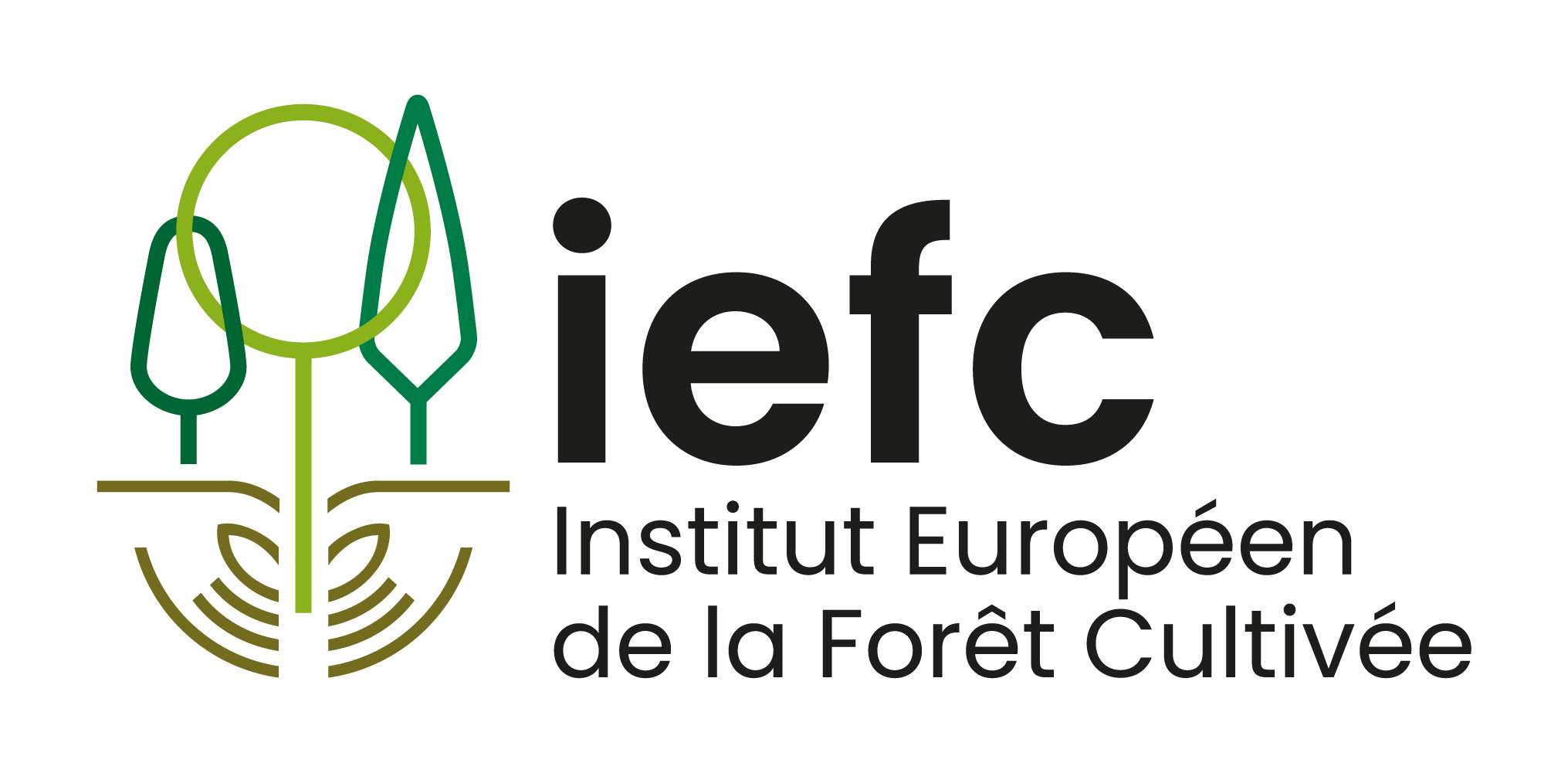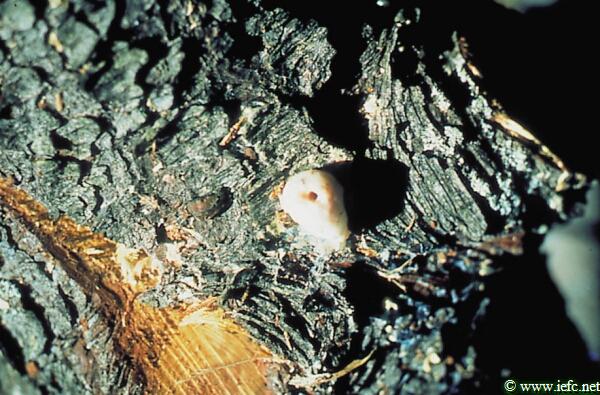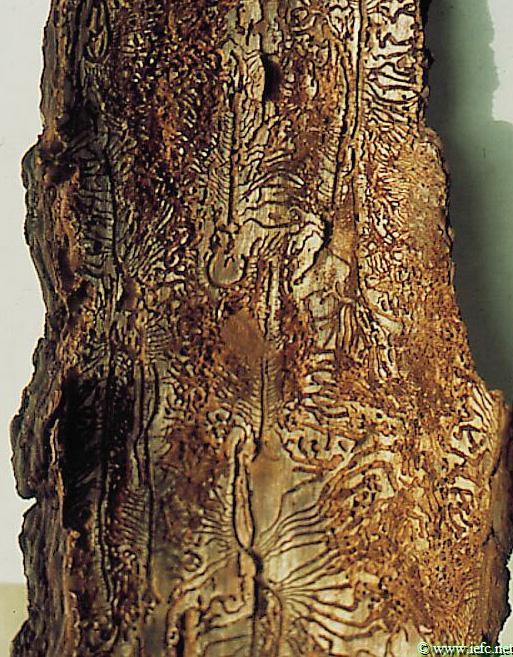European bark beetle
Orthotomicus erosus (Wollaston) (Coleoptera, Scolytidae)
Synonyms: Tomicus erosus, Ips erosus.
Host tree
Pine species (Pinus ), but also cypress species (Cupressus ), cedar of Lebanon (Cedrus libani ), Spanish fir (Abies pinsapo ) and Douglas fir (Pseudotsuga menziesii ).
Identification
- Tree tops become discoloured (needles turn yellow then red-brown).
- Pinkish or white pitch tubes or orange-brown or yellowish sawdust coming out from insect entry holes in the bark (Photo 1).
- Presence of a star-type gallery system under the bark with 2, 3 or 4 longitudinal branches (maternal galleries) (Photo 2). When there are just two opposite galleries the gallery system has the appearance of a single, longitudinal gallery. Maternal galleries of O. erosus are much smaller (1,2 – 1,4 mm wide and 2-8 cm long) than those of Ips sexdentatus (3-5 mm wide and up to a meter long).
- In the gallery system larvae (white and c-shaped), pupae or (immature) adults can be present. Adult beetles are 3-3,5 mm long and have a brown, almost black body and grooved elytra.
Damage
- Weakened trees often die. At high population levels massive attacks can lead to the death of healthy trees.
- The beetles transmit blue-stain fungi.
Biology
- There are 2-4 annual generations. Females lay eggs during several, consecutive periods giving raise to up to four ´sister broods´.
- Trees are attacked from March to October.
- Winter is spent as pupa or adult under the bark.
- Normally beetles are only able to attack weakened trees, but at high populations levels, healthy trees can also be attacked.
Risk factors
- Stressed trees are more prone to attacks. Therefore attacks are more intense in successive years of drought and on trees ravaged by fire or storms.
- Timber piling in or near stands increases the risk of tree attacks.
Distribution
- Widely distributed across southern Europe, North Africa and Asia. Introduced in Chile, Fiji, Southern Africa and the USA.
Pest management
Monitoring
- Use of traps baited with ethanol or a-pinene, or with the synthetic pheromone.
- Use of log traps in pine stands (renew logs regularly).
Preventive measurements
- Implement silvicultural practices that favour tree vigour.
- Don´t leave freshly cut wood piling in the woods from March to October.
- Remove burnt or fallen trees from the woods especially from March to October.
Curative control
- Where allowed, registered insecticides can be applied on infested piles to prevent attacks in neighbouring stands.
Climate change
- Outbreaks are likely to increase because increased summer droughts, storms and fires will provide more favourable conditions for this secondary bark beetle.
- While, in Europe, outbreaks are presently limited to the Mediterranean region, it is likely that the range of this beetle will move northwards with global warming.


